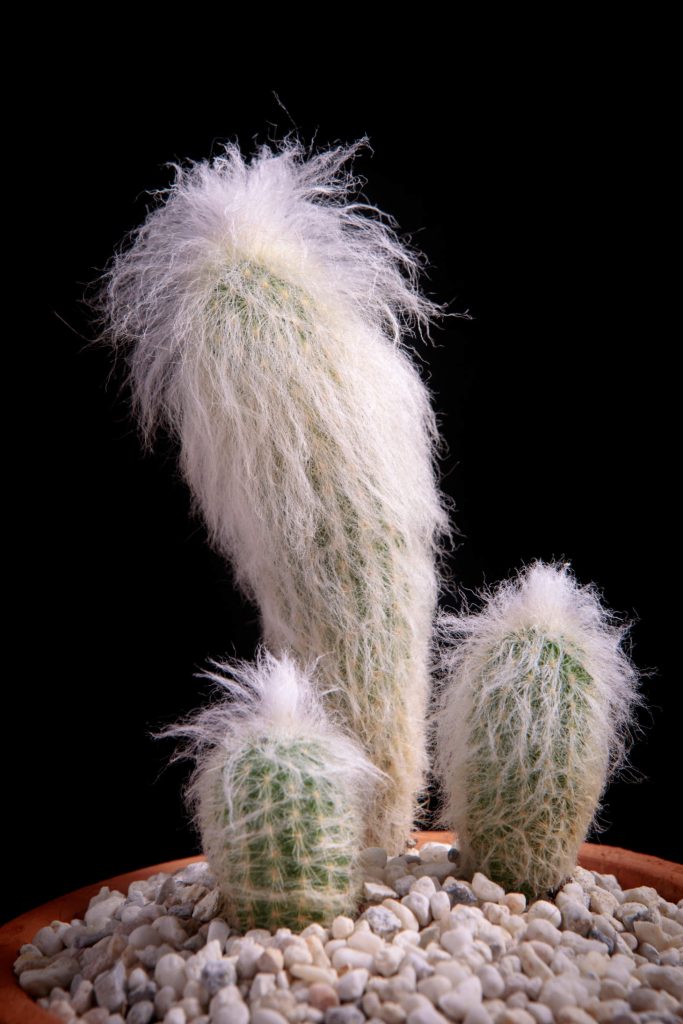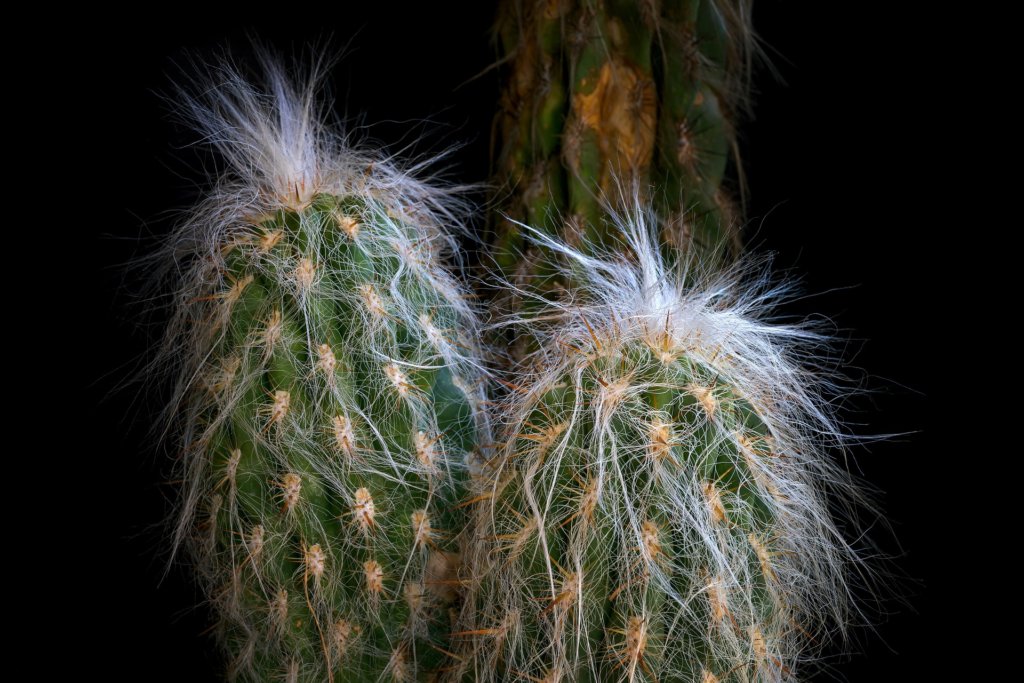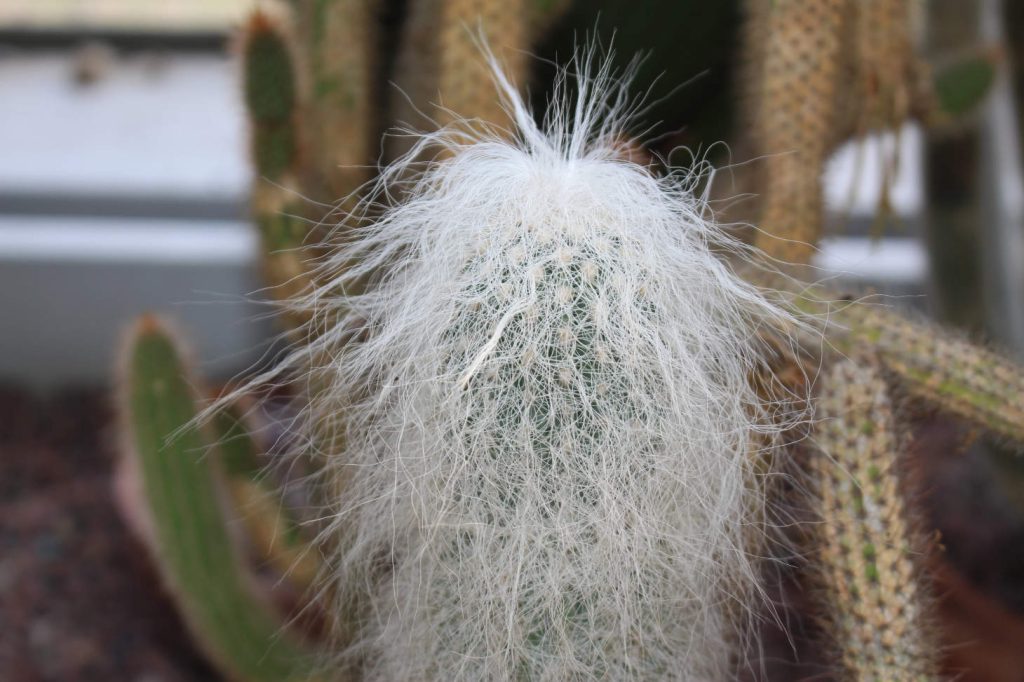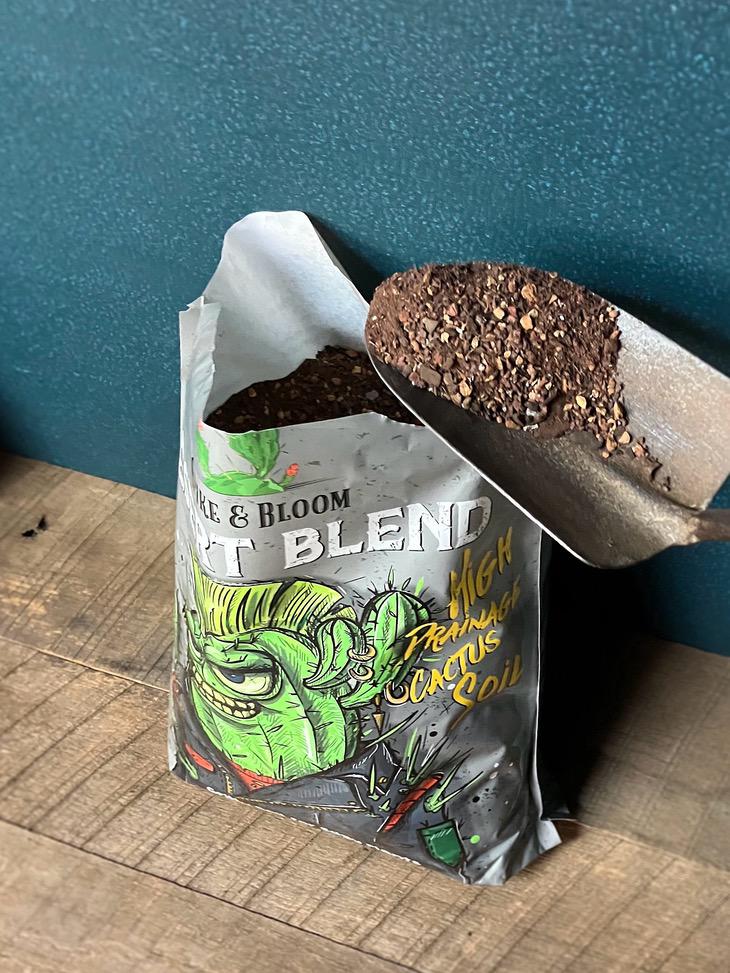Old Man Cactus Care
The Old Man Cactus, or Cephalocereus senilis, stands out with its tall, columnar shape and soft white hairs that resemble an aged beard. Native to Mexico and part of the Cactaceae family, this plant thrives in warm, sunny environments and adds character to any indoor or outdoor collection. To care for an Old Man Cactus, you need to provide bright light, well-draining soil, and infrequent watering that keeps the roots dry and healthy.
You’ll find that this cactus grows slowly, rewarding patience with its striking appearance and low-maintenance nature. Learning how it grows, when to repot, and how to handle pests helps you keep it thriving for years. Understanding its unique needs makes the difference between a struggling plant and one that stands tall and healthy in your care.
Essential Old Man Cactus Care Requirements
You need to give your Old Man Cactus bright light, dry soil, and careful watering to keep it healthy. It grows best in warm, sunny places with well-draining soil and light feeding during the growing season.
Light and Temperature Needs

Your Old Man Cactus thrives in full sun. Place it near a south- or west-facing window if grown indoors. It needs at least six hours of direct sunlight daily to maintain strong growth and its thick, white hairs.
If your cactus does not get enough light, it may show stunted growth or lose its bright color. Move it to a brighter spot or use a grow light during darker months.
Keep temperatures between 70-85°F (21-29°C) during the day and above 50°F (10°C) at night. Protect it from frost and cold drafts. Outdoors, it can handle heat well but benefits from light afternoon shade in very hot climates.
Watering Practices
Water your Old Man Cactus sparingly. Let the top 2-3 inches of soil dry completely before watering again. This cactus stores moisture in its stem and does not tolerate soggy soil.
Use the “soak and dry” method, water deeply until it drains from the bottom of the pot, then let the soil dry out fully. Overwatering can lead to root rot, a common problem in cactus care.
During winter, water only once every 4-6 weeks, or even less if the plant is dormant. Always use a pot with drainage holes to prevent standing water.
Soil and Potting Mix
Your cactus needs well-draining soil to stay healthy. A fast- draining commercial cactus mix works well, or you can make your own blend using:
- 1 part coarse sand
- 1 part perlite or pumice
- 1 part potting soil
This mix keeps the roots dry and prevents rot. Avoid heavy garden soil that holds too much moisture.
Use a terra cotta or unglazed clay pot to help moisture evaporate faster. Repot every 2–3 years to refresh the soil and check for root health.
Fertilization Guidelines
Feed your Old Man Cactus lightly during the spring and summer growing season. Use a balanced, water-soluble cactus fertilizer diluted to half strength once a month.
Avoid fertilizing in fall and winter when growth slows. Too much fertilizer can cause weak, leggy growth and harm the roots.
Choose a formula low in nitrogen but higher in phosphorus and potassium to support healthy stem growth and root strength. Always water before fertilizing to prevent root burn.
Growth Habits and Appearance
This cactus stands out for its tall columnar shape and dense coat of white hairs that protect it from harsh sunlight. It grows slowly but steadily, developing a distinctive appearance that makes it easy to identify among other succulents.
White Hairs and Spines

The Cephalocereus senilis, often called the Old Man Cactus or Bearded Cactus, is covered in long, silky white hairs. These hair-like spines act as natural insulation, shielding the plant from intense sun and helping it retain moisture.
Beneath the hairs are sharp yellow spines that offer protection from animals. The contrast between the soft outer layer and the rigid inner spines gives the plant its signature “hairy old man” look.
Over time, the hairs may grow longer and thicker, especially in bright light. You should avoid brushing or cutting them, as they serve an important role in temperature control and moisture balance.
Size and Growth Rate
The Old Man Cactus grows slowly, particularly when kept indoors. In its native habitat of Mexico, mature plants can reach up to 20 feet (6 meters) tall. Indoors, it usually stays between 6 inches and 6 feet, depending on pot size and care.
Growth occurs mainly during warm months. The plant adds new segments at the top, gradually forming a tall column. Because of its slow rate, it’s a good choice if you prefer a low-maintenance cactus that doesn’t outgrow its space quickly.
You can expect noticeable height increases only after several years. Consistent sunlight, well-draining soil, and moderate watering encourage steady development.
Indoor vs. Outdoor Growth

When grown indoors, the Old Man Cactus prefers a sunny window with at least 6 hours of direct light each day. It thrives in dry conditions and needs a pot with drainage holes to prevent root rot.
Outdoors, it can grow taller and denser, especially in arid or semi-arid climates similar to its native environment. The Old Man of the Andes Cactus, a related species, is more cold-tolerant.
If you live in a cold area, bring your cactus inside during winter. Extended exposure to frost can damage the hairs and cause tissue rot. Proper light and temperature control help your cactus maintain its healthy, fuzzy coat year-round.
Propagation and Repotting
You can grow Cephalocereus senilis either from seed or by using cuttings. Each method needs patience and careful handling to prevent rot. Repotting every few years keeps the roots healthy and gives this slow-growing cactus room to develop.
Growing from Seed
Growing Old Man Cactus from seed takes time but can be rewarding. Seeds germinate slowly, often taking several weeks before showing growth. Use a well-draining, sterile soil mix such as cactus soil blended with coarse sand or perlite.
Keep the soil lightly moist but never soggy. Cover the container with clear plastic or a humidity dome to maintain warmth and humidity around 75–85°F (24–29°C). Place it in bright, indirect light.
Once seedlings appear, remove the cover to improve air circulation. Allow the top layer of soil to dry slightly between waterings. Seedlings can stay in their trays for several months before being moved to small pots. Handle them carefully, as their roots are delicate and slow to establish.
Cuttings and Offsets

Propagation by vegetative methods is often faster and more reliable than growing from seed for Cephalocereus senilis (Old Man Cactus). While younger plants grow as a single column, mature plants, or those that have been stressed, may be propagated by taking cuttings or separating offsets.
Propagation by Stem Cuttings
Taking a stem cutting is typically done to salvage a plant (if the base is rotting) or to control the size of a very tall specimen.
- Take the Cutting: Using a clean, sharp, sterile knife, take a healthy segment of the stem. A clean, angled cut is best to allow water runoff and faster drying.
- Callus Formation: The cut end must be allowed to dry completely in a shaded, dry area for several days to a few weeks until a firm, dry callus forms. This step is critical to prevent rot.
- Planting: Once calloused, plant the cutting in a soilless or sandy, gritty mix to ensure excellent drainage. Do not water immediately; wait about a week to allow the plant to settle and prevent moisture exposure to the fresh callus.
- Aftercare: Keep the cutting in a warm, bright spot with indirect sunlight. Roots usually form within a few weeks to a couple of months. You can check for success by gently tugging the cutting, resistance means roots have developed.
Propagation by Offsets (Pups)
While Cephalocereus senilis is not a strongly clumping cactus, offsets (or “pups”) can occasionally form at the base of large, older plants or on the stump of a plant that was previously cut.
- Separation: Once the offset is large enough and has developed its own tiny roots (which can be seen by gently scraping back the soil), use a clean, sharp knife to sever it from the mother plant’s tissue.
- Callus and Planting: Treat the severed base of the offset like a cutting: allow it to dry for several days until a firm callus forms. Plant the calloused offset in the same well-draining soil mix as described above and follow the same watering and lighting instructions.
Repotting Best Practices
Old Man Cactus grows slowly, so it rarely needs frequent repotting. Plan to repot every 3–4 years or when roots fill the container. Choose a pot slightly larger than the old one with several drainage holes.
Wear gloves to protect your hands from the fine spines. Remove the cactus gently, checking roots for rot or pests. Trim any damaged roots with sterile scissors.
Use a gritty, fast-draining mix made of cactus soil, pumice, and coarse sand. After repotting, wait about a week before watering to allow root wounds to heal. Place the cactus in full, intense sunlight and resume its normal seasonal watering schedule.
Common Problems and Solutions

Your Old Man Cactus can face issues like insect infestations, excess moisture, and lack of blooms. With careful monitoring and proper care, you can prevent most problems and keep your cactus healthy for many years.
Pests: Mealybugs and Spider Mites
Mealybugs and spider mites often hide in the cactus’s long white hairs, making them hard to spot. You may notice small white cotton-like spots or fine webbing on the surface. These pests feed on plant sap, causing stunted growth and yellowing.
To treat infestations, isolate the plant and wipe affected areas with a cotton swab dipped in 70% isopropyl alcohol. For larger outbreaks, use an insecticidal soap or neem oil spray every few days until pests disappear.
Keep humidity low and ensure good airflow around the cactus. Regularly inspect the hairy surface, especially near the base, where insects tend to hide. Consistent monitoring helps prevent reinfestation.
| Pest Type | Common Signs | Treatment |
|---|---|---|
| Mealybugs | White cottony clusters | Alcohol swab or neem oil |
| Spider mites | Fine webs, yellow spots | Insecticidal soap, rinse plant |
Encouraging Bloom and Flowering
Old Man Cactus produces night-blooming flowers, but it rarely blooms indoors without the right conditions. The plant needs several years of maturity, strong sunlight, and a period of cooler, dry rest in winter.
Place your cactus in bright, direct light for at least six hours daily. During winter, reduce watering and keep temperatures around 50–60°F to mimic its natural dormant period.
Avoid frequent repotting, as this slow-growing cactus prefers to be root-snug. With patience and stable conditions, your cactus may eventually reward you with its delicate, short-lived flowers.


